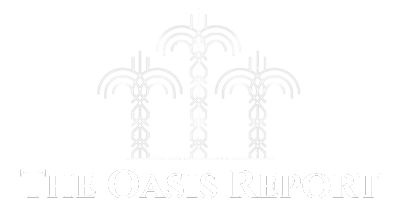Oil markets are watching the escalating Israel-Iran hostilities in a state of rising anxiety. Brent crude – at around $74 a barrel on Monday morning – is up 12 percent since the first signs of an impending Israeli attack last week.
That is a big jump, but it still remains largely priced for regional tension rather than global disruption.
One scenario hovers over every discussion of international crude markets: a shutdown of the Strait of Hormuz. It may still seem unlikely, but the prospect of closure of one of the world’s most vital oil waterways grows with each volley of missiles between Tel Aviv and Tehran.
Iran has often threatened to close Hormuz, though some analysts believe it never will. Tehran needs the Strait as much as anyone, they argue, with 80 percent of its oil exports passing through those waters. Blocking the route would be an act of self harm.
Experts are also sceptical that Iran has the physical ability to block the Strait – 21 miles wide at its narrowest point – for anything other than a brief period, in the face of US naval power, backed by other Western and some regional navies.
But that does not mean it will not try.
The Islamic Revolutionary Guard Corps has rehearsed exactly such a scenario for years, using speedboats, underwater mines and land-based missiles to sow chaos.
Iran would not need to sustain a total shutdown. A few days of maritime disruption, caused by a hit on a tanker, a drone attack on shipping or a mine strike, would be enough to spook international oil markets and make the war a truly global reality.
What might provoke Iran to take such action? Israel has already struck deep inside Iran with missiles, drones and fighter aircraft, and over the weekend launched attacks on oil and gas storage and logistics infrastructure. But it has so far held off directly hitting refining and exporting facilities.
If Tel Aviv attacks the Abadan refinery, one of the largest in the Middle East, or Kharg Island, Iran’s principal oil export terminal, Tehran may seriously weigh the prospects of closing down Hormuz.
It may even consider attacks on forces it regards as hostile in other Gulf countries, such as US bases in Qatar and Bahrain. What started as surgical Israeli airstrikes could spiral into a regional conflagration.
The most immediate casualties would be Asia’s oil-hungry giants. China, India, Japan and South Korea all rely heavily on crude flowing from Gulf producers through Hormuz. For China and India, more than half of their daily imports come through these lanes.
In the event of a blockage, strategic reserves might last a month or two but after that would come rationing, inflation and economic pain.
Refiners in Singapore, Malaysia and elsewhere in Southeast Asia would also suffer.
Europe, with diversified supply and lower dependency, is relatively less exposed – but oil prices are global. Crude at $150 is not a fantasy in this scenario, but a distinct possibility.
A global oil price spike would reignite inflation just as central banks were preparing to ease interest rates. Emerging markets would be hammered and growth forecasts would be downgraded again – all this on top of other uncertainties caused by President Trump’s volatile economic policies.
The Arabian Gulf countries have some contingency options if Hormuz is closed. In Saudi Arabia, the east-west pipeline from Abqaiq to Yanbu on the Red Sea allows some of the kingdom’s crude to bypass Hormuz. The UAE has the Habshan-Fujairah pipeline doing a similar job.
But these pipelines cannot handle full national output for either country. Fujairah can supply some Asian demand, but it lacks scale; Yanbu can serve Europe, but also faces bottlenecks in the Red Sea.
It is in the interests of Riyadh and Abu Dhabi to de-escalate the crisis, but their leverage is limited.
Oil traders are weighing up a raft of variables. After the spikes of the past few days, and against the backdrop of a well-supplied oil market with Opec+ putting more barrels back in supply on a monthly basis, some may be tempted to go short.
But the risks are enormous. War, the Hormuz chokepoint, capacity under threat and volatile geopolitics all make oil markets more unpredictable than ever.
Should traders bet on the outside possibility of a ceasefire and nuclear deal? With Israel increasingly self-confident and the USA sensing a historic opportunity to settle, finally, its near five-decade fight with Iran, both seem unlikely.
Frank Kane is Editor-at-Large of AGBI and an award-winning business journalist. He acts as a consultant to the Ministry of Energy of Saudi Arabia



